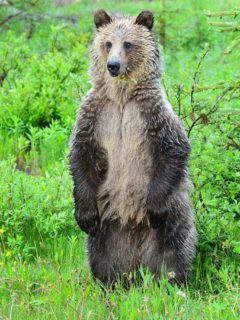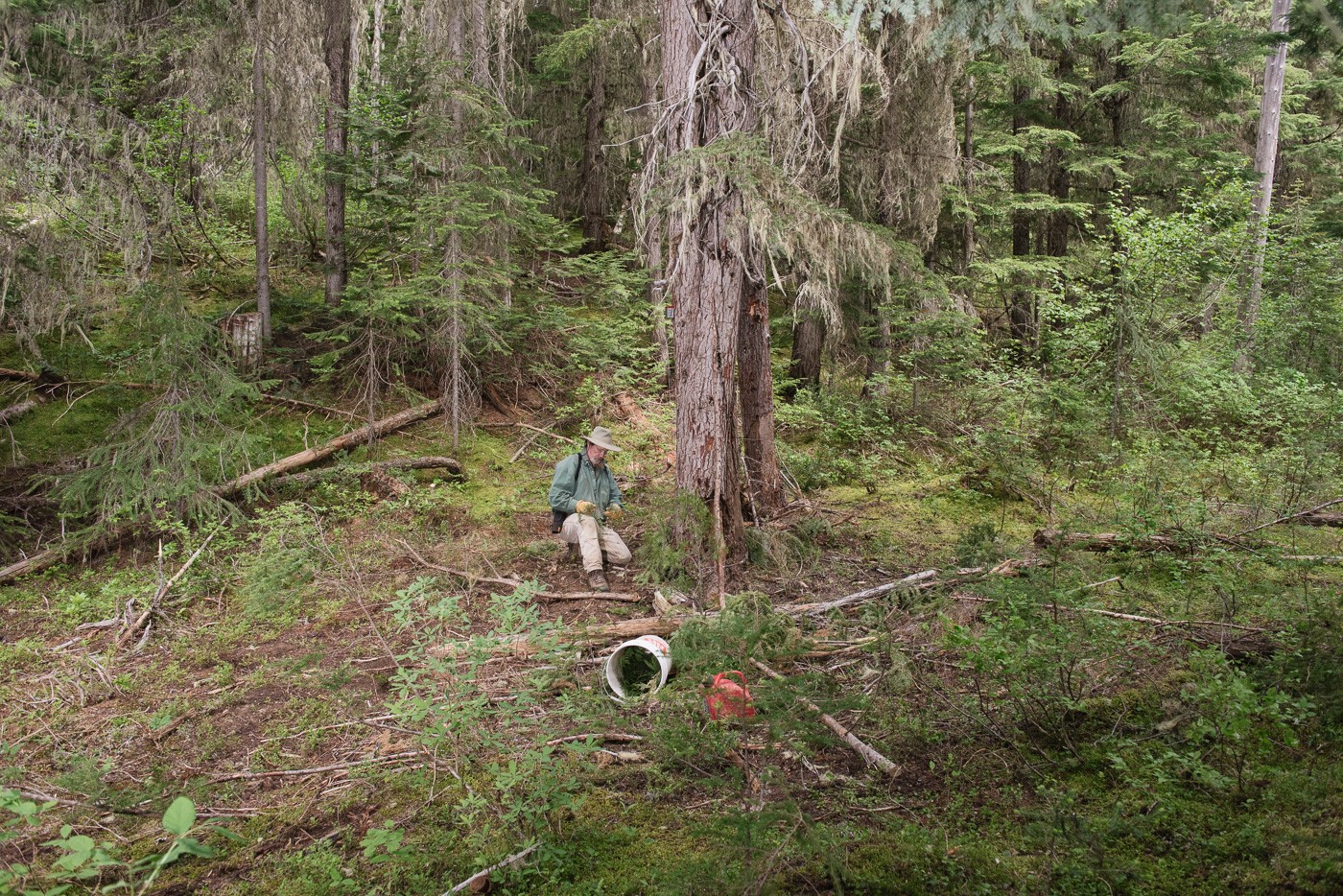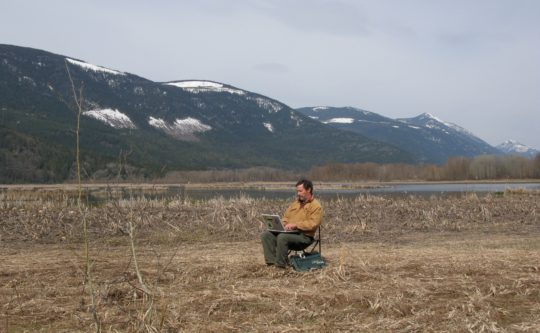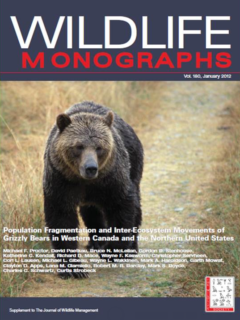
The Making of a Grizzly Bear Scientist
Yellowstone to Yukon

For nearly 20 years Michael Proctor lived in the British Columbia wilderness building boats and musical instruments by hand. In 1990 he emerged to start an undergraduate distance-learning program for which he commuted by canoe to transmit documents by mail and communicate via phone booth. It was during this time that Proctor built an appreciation for living and learning without racing the clock, which would come in handy years later while studying grizzly bears.
According to Michael Proctor, learning grizzly bear demographics and movement patterns through DNA signatures is “a bit of an endurance science.” Proctor, an affable and playful independent researcher, now living in Kaslo, British Columbia, has been a bear researcher for 20 years. He was part of the world’s first bear DNA study that took place in British Columbia’s Glacier National Park in 1995 and has since become one of the world’s leading experts on using DNA as a tool to understand bear populations and the impacts of fragmentation on population demographics. He leads the Trans-border Grizzly Bear Project.
The Purcell Mountain Bottleneck
Proctor’s study area has been the Purcell and Selkirk mountains of British Columbia, Montana, and Idaho, an area known as the Inland Temperate Rainforest. According to Proctor, the Purcell Mountains are the “southern tip of the Canadian grizzly bear mother load west of the Rocky Mountains.” Gaining answers to questions about the movement of grizzly bears in and out of the Purcells and Selkirks has been a joint endeavor of Proctor and the U.S. Fish and Wildlife Service.
According to Wayne Kasworm with the U.S. Fish and Wildlife Service, grizzly bear conservation success in the Cabinet, Yaak, and Selkirk mountains south of the border is directly tied to the fate of bears in Canada. For ten years Proctor and U.S. Fish and Wildlife Service radio-collared bears in the Purcells so the bears could teach them where the best linkage areas were. That data allowed groups like the Nature Conservancy of Canada to take conservation actions with confidence to protect places such as the Frog Bear Conservation Corridor that bears use to traverse the Creston Valley between the Purcell and Selkirk mountains.
“Bears have good noses, tend to be hungry all the time, and can get lured into eating human food easily,” says Proctor.

Photo: Michael Proctor
Bears Are Like Teenagers Going off to College
“Bears have good noses, tend to be hungry all the time, and can get lured into eating human food easily,” says Proctor. According to another publication Proctor authored with 18 collaborating scientists, human settlement was the most potent predictor of fragmentation for bear populations. The study concluded that bear linkage zones have to be several kilometers wide for bears to stay out of trouble. “When you send your teenage child to college you want to keep them on a straight path,” laughs Proctor. “Well, it turns out to be the same thing with bears.”
What is unique about Proctor and his Trans-border Grizzly Bear Project is that he studies solutions in addition to the problems. Proctor works directly with partners to ensure those wandering “teenagers” stay on the straight and narrow.
First, he is working with conservation partners such as the Nature Conservancy of Canada mentioned above to identify and protect key conservation parcels so grizzly bears have the wide linkage zones they need to stay out of trouble. Second, he is working with British Columbia Conservation Service officers on non-lethal management techniques to manage bears that get close to human settlements. The U.S. Fish and Wildlife Service, Idaho Fish and Game, and Montana Fish, Wildlife and Parks do similar activities south of the border. “As a scientist, I have some credibility, but I prefer to let the data do the talking,” says Proctor. “At the end of the day, human safety is the number one priority. If there is a problem, we kill the bear. No questions.”

Going the Extra Mile for Female Bears
The research Proctor and 18 other scientists published in 2012 used 3,100 DNA samples from bears living as far south as Yellowstone and north to Southeast Alaska and the Yukon. According to the conclusions, while genetic diversity and the movement of genes is important, what matters to grizzly bears is that females can move to provide demographic connectivity. In other words, small fragmented grizzly populations like those found in the Selkirk Mountain Range and Cabinet-Yaak area depend on female bears having safe linkage areas that allow them to move into those areas successfully. “Females are pretty sensitive to external pressures such as human settlements and roads,” indicates Proctor. “We need to go extra lengths to make sure they are successful.”

Looking Across the Horizon
Proctor has been self-employed since he was fifteen years old. He can’t imagine doing it any other way. He acknowledges that partnering with the U.S. Fish and Wildlife Service has been critical to making his work possible. “Without them, I would be living under a rock,” chuckles the Canadian. Wilburforce Foundation appreciates that strong science underpins conservation solutions and that scientists like Proctor inform good decision-making on the micro- and macro-level. Michael Proctor was awarded Wilburforce Foundation’s Conservation Leadership Award in 2016.
While Proctor indicates he is “older than the hills,” grizzly bear conservationists can rest assured that Proctor will be doing his research and hands-on coexistence work for “years to come.”



